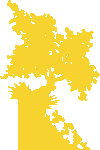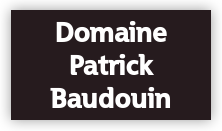The domaine
OUR TERROIRS
We produce red wines with the Cabernet Franc and Sauvignon grape varieties on four hectares. We also work with the emblematic grape variety of Anjou -the chenin- upon ten hectares, from Savennières to Quarts de Chaume, from dry white wines to Coteaux-du-Layon sweet ones.
Our parcels are in the following towns ; Chaudefonds-sur-Layon, Saint-Aubin de Luigné, Rocherfort-sur-Loire, Savennières.
Under the following map you can access to a more complete description of our lands and grape varieties.
Don’t forget to click full screen under the map.
Otherwise you can click here to have an overview of a Google Earth map which will provide you further details. (After having clicked up here you’ll have to click on the arrow on the right corner ; then you will open the downloaded file with Google Earth – you need to have Google Earth ; free downloading here).
Savennières’ vines, overhanging the right side of the Loire (10km away from the Layon Valley) lays on the same bedrock. Chenin eventually spreads its kingdom there too.
Our terroirs : an amazing wealth and diversity
A paradise for geologists ; in fifty meters you can travel across hundreds of million years, a true time machine.
The Domaine’s plots of land rests upon three geological periods.
- The Carboniferous period (Paleozoic – from 360 to 300 million years ago) mainly remarkable in Les touches, Les Bruandières, Sous-les-Moulins, Les Zersilles.
- The Saint-George area (Paleozoic – from 480 to 360 million years ago) observable in Savennières (Bellevue) and La Fresnaye.
- Precambrian/Brioverian (550 million years ago) in Le Cormier au Chat, Le Cornillard, Les Saulais or even in Les Gâts.
The main facies of our soils are made of purple schist (Bellevue), sandstone schists or conglomerate concerning the Carboniferous while the Brioverian is more about (friable) meta-greywackes.
Speaking about wine-making environment ; mineral alteration (20%) and rocky one (60%) are prevailing ; which happens to be perfect for the chenin. Rocky environment has a superficial soil (<60cm) and lays on a well identified geological substrate while mineral alteration environment includes soils being moderately deep (70-110cm) made of the bedrocks laying below it.
The Layon Valley being protected at the south by a mountainous area (220m), experiences a low pluviometry (under 600mm on 30 years). Yet its proximity with the Atlantic Ocean and its opening towards the West are decisive. Moreover, the hills (coteaux) are between two rivers, the Loire and the Layon. All these factors create the perfect conditions for the expression of the botrytis. This fungus (source of the noble rot) is in our vineyards every year, always as seducing as risky.
Chenin & “Black Anjou”
Chenin is THE true grape variety of Anjou. Its origins are still unclear though it would be related with the Savagnin. Because being rustic the chenin is aromatically uninteresting when not pampered. Its interest here in the Loire is to offer a great maturity. Now if the chenin is well taken care of ; with correct yields and good harvesting, then it appears to be a great terroir indicator and it can also enhance its terroir with the noble rot. This is the chenin’s paradox. This “oaf” requires a huge attention to reveal its delicacy. It can express itself in so many ways, dry, sweet, sparkling or even spirituous.
To learn more about the chenin : http://www.musee-vigne-vin-anjou.fr... extract from a conference held in 2015.
Dry Anjou Blanc & sweet Coteaux du Layon.
At the beginning of the 20th century, the region endangered the chenin and its wines. Indeed it was common that men would force the nature by using unnatural ways to obtain sweet or spirituous vintages. Consequently Layon’s were non-natural and dry were of no interest.
The return of natural sweet wines goes along with the revival of quality dry wines marked by their terroirs. According to a multitude of factors such as the vintage, the parcel, the winemaker, a whole new palette of white Anjou is emerging. Our wines have nothing to envy from ones from other regions.
Cabernet Franc & Cabernet Sauvignon
The dates of the birth of the Cabernet in Anjou are not set yet. XIth century (according to the Ronceray Abbey) or XVIIth century (if we rather trust Breton ; Richelieu’s abbot and intendant).
We can be sure of one thing though ; in Anjou Noir it was later on, only in the 1960’s in our domain and to produce rosé at first (in our domain we have chenin since 1924). Red wines used to come from “Pineau d’Aunis” & “Grolleau”. Those red wines were reserved for personal consumption of the domain at first and were not commercialized.
Here the Cabernets are to their North limit. On our schists, they can offer great wine of terroir with a great potential of ageing as long as the yields are measured and the wines slowly and carefully vinified. This way they will reveal all the great characteristics of structure and freshness of our soils.
Domaine Patrick BAUDOUIN - Princé - 49290 CHAUDEFONDS-SUR-LAYON
FRANCE - Tél./Fax : +33 (0)2 41 74 95 03
"l'abus d'alcool est dangereux pour la santé" (article L.3323-4 du code de la santé publique)
"C'est la pénicilline qui guérit les hommes, mais c'est le bon vin qui les rend heureux". (Alexander Fleming)



